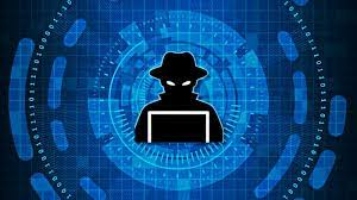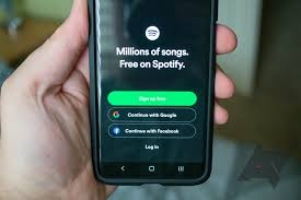Press Release
Malware is now being concealed by hackers in Windows Event Logs.

Undocumented publicly for attacks in the wild, security researchers have discovered a malicious operation that leveraged Windows event logs to contain malware.
The assault’s threat actor was able to use the technology to introduce fileless malware into the file system as part of a covert attack using a variety of techniques and modules.
Payloads are added to Windows event logs.
After being recognised as a threat on a customer’s computer by a commercial product equipped with technologies for behavior-based detection and anomaly control, researchers at Kaspersky collected a sample of the virus.
According to the study, the malware utilised a sizable number of both custom-made and commercially available tools as part of a “highly targeted” effort.
One of the most intriguing aspects of the attack is the bespoke malware dropper’s injection of shellcode payloads into Windows event logs for the Key Management Services (KMS).
According to Kaspersky’s lead security researcher Denis Legezo, the malicious campaign marked the first time this technique had been deployed “in the field.”
At order to load malicious code via DLL search order hijacking, the dropper copies the genuine OS error handling programme WerFault.exe to “C:WindowsTasks” before dropping an encrypted binary resource to the “wer.dll” (Windows Error Reporting) in the same location.
A hacking method called DLL hijacking uses weak security checks in normal programmes to load a malicious Dynamic Link Library (DLL) into memory from any location.
According to Legezo, the dropper’s functions include looking for specific entries in the event logs (category 0x4142, or ‘AB’ in ASCII), as well as putting data onto the disc for the side-loading procedure. In the absence of such a record, it generates 8KB chunks of encrypted shellcode that are then merged to create the code for the subsequent stager.
Given that the source code for injecting payloads into Windows event logs has been publicly available for a short while, the new technique examined by Kaspersky is probably on its way to becoming more well-known.
Advanced technical actor
Legezo states that the overall campaign “looks remarkable” based on the numerous methods and modules (pen-testing suites, personalised anti-detection wrappers, and final stage trojans) utilised in it.
He claimed to an APT-level adversary, saying to BleepingComputer that “the actor behind the campaign is pretty adept by itself, or at least has a good set of quite sophisticated commercial tools.”
The commercial penetration testing frameworks Cobalt Strike and NetSPI were among the tools utilised in the attack (the former SilentBreak).
Although the researcher believes that some of the attack’s modules are original, they may really be a part of the NetSPI platform, which testing required a paid licence for.
For instance, two trojans with the names ThrowbackDLL.dll and SlingshotDLL.dll could represent tools that belong to the SilentBreak penetration testing framework and are known to use those names.
According to the research, the attack started in September 2021 when the victim fell for a scam to download a RAR archive from the file-sharing website file.io.
The Cobalt Strike module, which was signed with a certificate from the business Fast Invest ApS, was subsequently distributed by the threat actor. 15 files were signed with the certificate, but none of them were genuine.
According to the researcher, the ultimate goal of targeted malware with such last stager functionality is typically to collect some valuable data from the victims.
When analysing the attack, Kaspersky did not discover any resemblances to earlier efforts linked to a recognised threat actor.
The researchers label the new activity SilentBreak, after the name of the tool most frequently employed in the attack, until a connection with a known opponent is made.
Press Release
Angry IT administrator destroys employer’s databases; sentenced to 7 years in prison

Han Bing, a former database manager for Lianjia, a major Chinese real estate agency, was given a 7-year prison term for breaking into company computers and erasing data.
Bing is accused of carrying out the conduct in June 2018, when he reportedly accessed the company’s finance system using his administrator rights and “root” account and deleted all previously saved data from two database servers and two application servers.
Large elements of Lianjia’s operations were immediately crippled as a result, leaving tens of thousands of workers without pay for an extended length of time and necessitating a data restoration effort that cost about $30,000.
However, because Lianjia has thousands of offices, employs over 120,000 brokers, owns 51 companies, and has an estimated $6 billion market value, the indirect costs from the firm’s economic disruption were significantly more detrimental.
examination of the staff
H. Bing was one of the five primary suspects in the event involving the data deletion, according to records made public by the court of the People’s Procuratorate of Haidian District, Beijing.
When the administrator refused to reveal his laptop password to the company’s inspectors, suspicions were quickly aroused.
Chinese media outlets who reprinted portions of the disclosed documents explain that “Han Bing stated that his computer had confidential data and the password could only be handed to official authorities, or would only accept entering it personally and being present during the checks.”
The checks were solely carried out to evaluate the response of the five employees who had access to the system because, as the investigators testified in court, they knew that such an operation wouldn’t leave any records on the laptops.
Finally, the experts were able to pinpoint the activity to particular internal IPs and MAC addresses after retrieving access records from the servers. The inspectors even collected WiFi network logs and timestamps, which they afterwards compared against CCTV footage to validate their suspicions.
The forensic expert hired by the company concluded that Bing had wiped the databases using the “shred” and “rm” commands. Rm deletes the files’ symbolic links, whereas shred overwrites the data three times with different patterns to make it unrecoverable.
Unhappy employee?
Unexpectedly, Bing had regularly warned his employer and superiors about security flaws in the finance system, even emailing other administrators to express his concerns.
He was mostly disregarded, nevertheless, as the departmental administrators never gave their approval for the security project he wanted to oversee.
This was supported by the testimony of the director of ethics at Lianjia, who told the court that Han Bing frequently argued with his superiors because he believed his organisational suggestions weren’t valued.
A similar incident occurred in September 2021 when a former employee of a credit union in New York deleted approximately 21.3GB of records in a 40-minute rampage as retaliation for her managers terminating her.
Press Release
Internet Explorer 11 support will no longer be offered by WordPress.

WordPress, the most well-known and widely used blogging platform, is thinking about removing support for Internet Explorer 11 when its usage falls below 1%.
WordPress has discovered that the cumulative usage of IE 11 is less than 1% using the following three metrics:
according to StatCounter’s GlobalStats, 0.71%.
from W3 Counter, 1.2%
from WordPress.com, 0.46%
When WordPress stopped supporting Internet Explorer 8, 9, and 10 in 2017, these usage figures were comparable.
WordPress plans to discontinue support for Internet Explorer 11 in the future due to the low number of users and the significant expense of maintaining the browser.
“Regarding the present WordPress user experience, the majority of WordPress users ought to be aware by now that a flag was introduced to BrowseHappy around 13 months ago to not recommend IE. In connection with this, the entire IE11 experience is subpar and comes with a significant maintenance cost for developers “Last week, WordPress clarified in a blog post.
WordPress is requesting feedback from individuals and organisations that still use the browser by March 18th in order to formulate their strategies for ceasing support.
WordPress is not the only platform to stop supporting IE 11.
Microsoft Teams’ web app will no longer be supported by Internet Explorer, and Microsoft 365 would stop supporting it on August 17, 2021, according to a 2020 August Microsoft announcement.
Press Release
Zuckerberg says Facebook is dealing with Spotify on a songs assimilation job codenamed Task Boombox (Salvador Rodriguez/CNBC).

Zuckerberg says Facebook is working with Spotify on a music integration project codenamed Project Boombox (Salvador Rodriguez/CNBC)
Salvador Rodriguez / CNBC:
Zuckerberg says Facebook is working with Spotify on a music integration project codenamed Project Boombox — – Facebook CEO Mark Zuckerberg on Monday announced that the company is building audio features where users can engage in real-time conversations with others.
-

 Apps1 year ago
Apps1 year agoWhy is Everyone Talking About Hindi Keyboards?
-

 Social Media1 year ago
Social Media1 year agoWho is Rouba Saadeh?
-

 Apps1 year ago
Apps1 year agoThings you need to know about Marathi keyboard today
-

 Apps1 year ago
Apps1 year agoStuck with Your default Bangla keyboard? Isn’t it time for a change?
-

 Social Media1 year ago
Social Media1 year agoMati Marroni Instagram Wiki (Model’s Age, Net Worth, Body Measurements, Marriage)
-

 Games12 months ago
Games12 months agoTop 7 Popular Puzzle and Card Games for Relaxing Your Brain on Mobile, Featuring Solitaire
-

 Entertainment1 year ago
Entertainment1 year ago12 Online Streaming Sites that Serve as Best Alternatives to CouchTuner
-

 Entertainment1 year ago
Entertainment1 year agoMovierulz Website: Movierulzz 2021 Latest Movies on Movierulz.com
